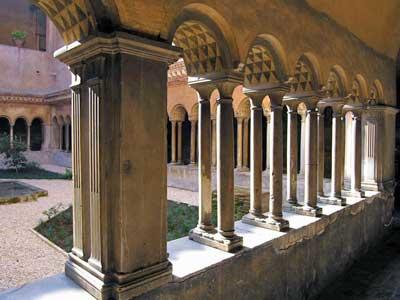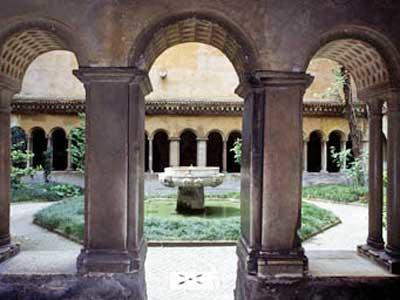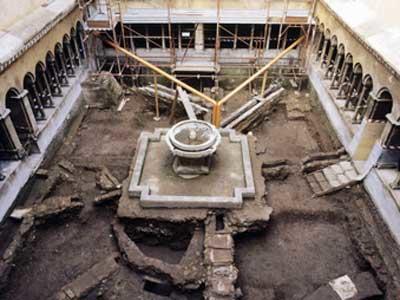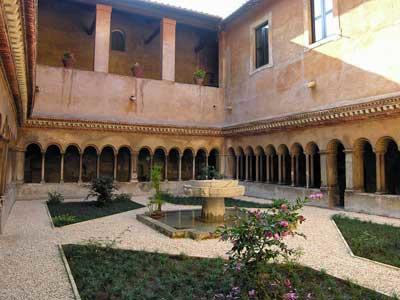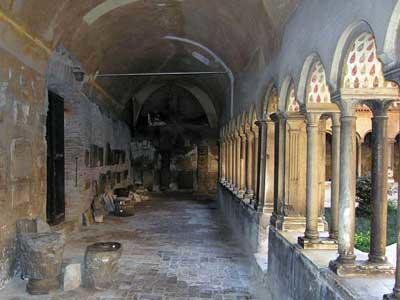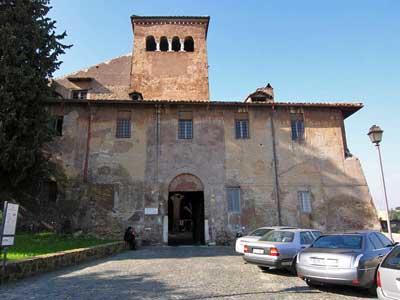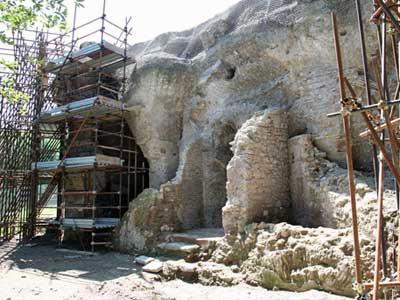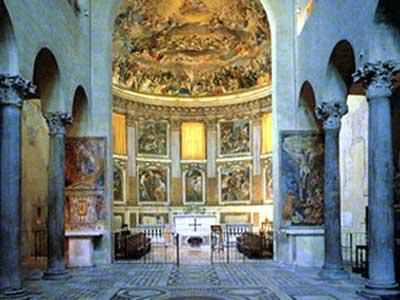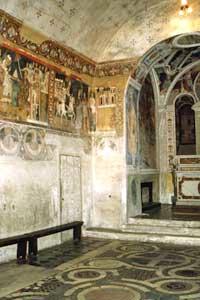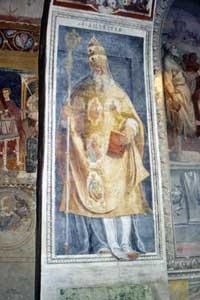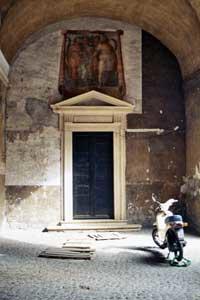Santi Quattro Coronati Cloister
Within the fortress-like Basilica of Santi Quattro Coronati complex is an early-13th-century cloister that is possibly the earliest structure in Rome in the Cosmatesque style, which is characterized by the use of small marble tessarae set in patterns to form colorful mosaics. The convent and cloister, together with the basilica and adjoining cardinal’s palace, constitute one of the most complete medieval ecclesiastical complexes surviving in Rome. Augustinian nuns have cared for the monastery since the 16th century. Between 1912 and 1914, the local superintendent for monuments, Antonio Muñoz, restored the cloister in such an exemplary manner that it stands as a milestone in the history of Italian restoration practice. In addition to the restoration, Muñoz assembled over 300 archeological artifacts found on the premises, now on display in the cloister. By the early 21st century, however, the cloister was once again in need of conservation work.
2000 World Monuments Watch
With funding, from the J. Paul Getty Grant Program and others, WMF undertook a complete study of the cloister, its decorations, and its garden. The initial phase, which consisted of a roof analysis and the installation of a drainage system in the foundation and a discreet ventilation system to the control humidity that had been causing dampness and condensation, finished in 2003. The second phase of the project consisted of restoring the cloister garden. With the overall objective of reinstating the garden’s original design based on archaeological and historical research, restoration included excavation to the garden’s original level, installation of a subsurface drainage system, replacement of non-historic paving with a new perimeter pathway, and improvements to the roof drainage system of the cloister.
The 13th-century Santi Quattro Coronati Cloister, located near the Coliseum in Rome, is an early, and possibly the first example of a Roman building in the Cosmatesque style. The complex sits in close proximity to a number of major Christian and secular monuments in Rome and forms part of the nucleus of structures contributing the understanding of medieval Roman and Christian history.

